Quarry Hill: What happened to the utopian social housing in Leeds?
Once the largest social housing complex in Britain, Quarry Hill in Leeds was designed with a modernist vision of affordable homes for local working-class residents. Yet just 40 years after it was built, it was demolished. Photographer Peter Mitchell looks back at his photographs of Quarry Hill, and asks what lessons it can teach us about how we live today

Your support helps us to tell the story
From reproductive rights to climate change to Big Tech, The Independent is on the ground when the story is developing. Whether it's investigating the financials of Elon Musk's pro-Trump PAC or producing our latest documentary, 'The A Word', which shines a light on the American women fighting for reproductive rights, we know how important it is to parse out the facts from the messaging.
At such a critical moment in US history, we need reporters on the ground. Your donation allows us to keep sending journalists to speak to both sides of the story.
The Independent is trusted by Americans across the entire political spectrum. And unlike many other quality news outlets, we choose not to lock Americans out of our reporting and analysis with paywalls. We believe quality journalism should be available to everyone, paid for by those who can afford it.
Your support makes all the difference.In 1932, a delegation from Leeds visited Vienna to see Europe’s ambitious, modernist social housing projects. At the time, Leeds inner-city Quarry Hill area was dominated by illegal, back-to-back terraced housing. A new solution was proposed to improve the quality of life for the city’s working-class residents – a new, European-style apartment block of social housing, with affordable rents and modern features like electricity, rubbish chutes and communal spaces.
The 13-block complex of 1,000 flats was designed by RAH Livett and opened in 1938, becoming Britain’s largest housing estate. It was popular with residents, at its peak housing 3,000 people. The development flourished for a couple of decades. A popular fish and chip shop, swimming pool and an annual kid’s carnival nourished a strong sense of community inside the enormous 36-acre complex.
But by the 1970s, it was clear that the dream of the Quarry Hill estate was over. Construction problems meant the buildings began to crumble and the residents had largely deserted the estate. In 1978, Quarry Hill was demolished.
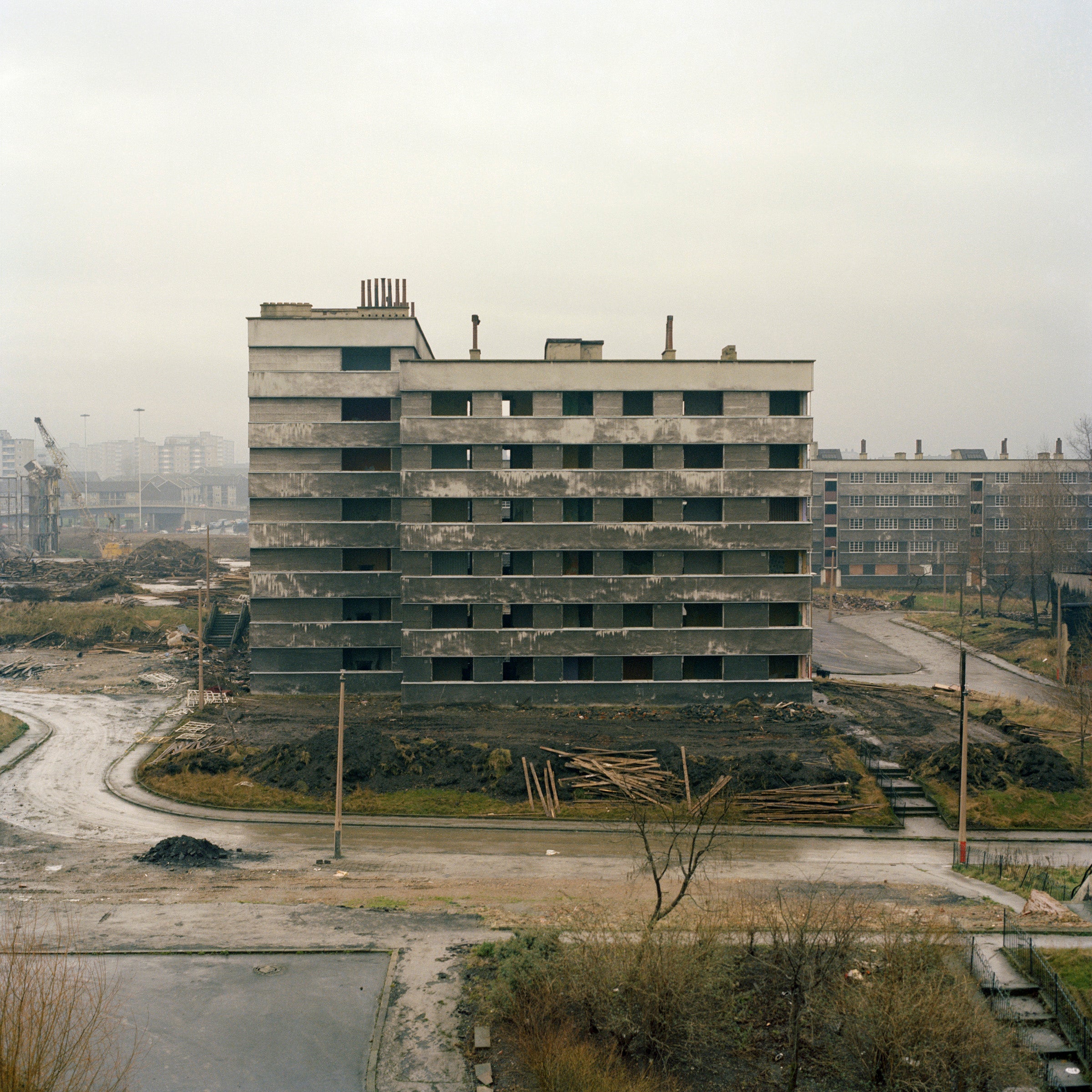
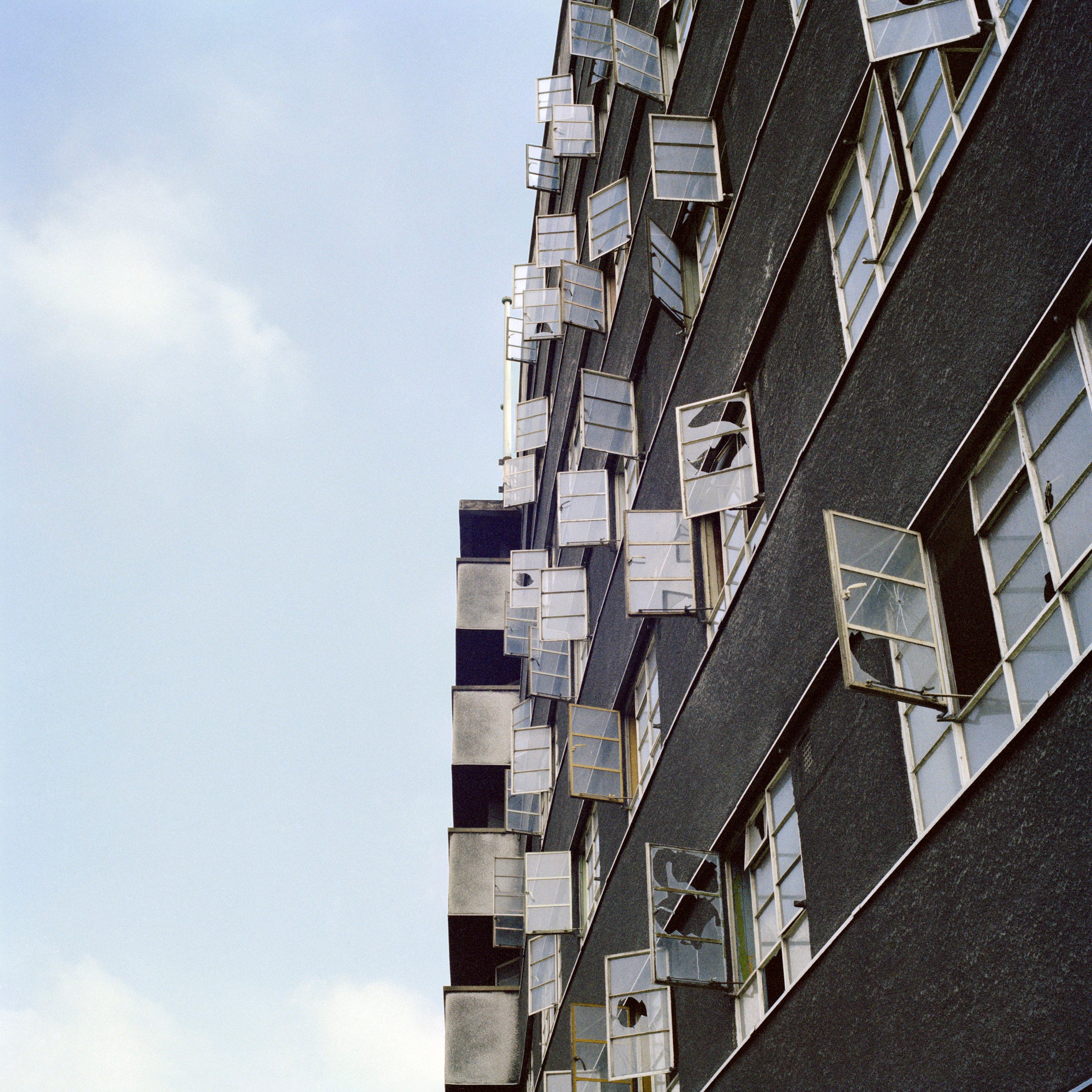
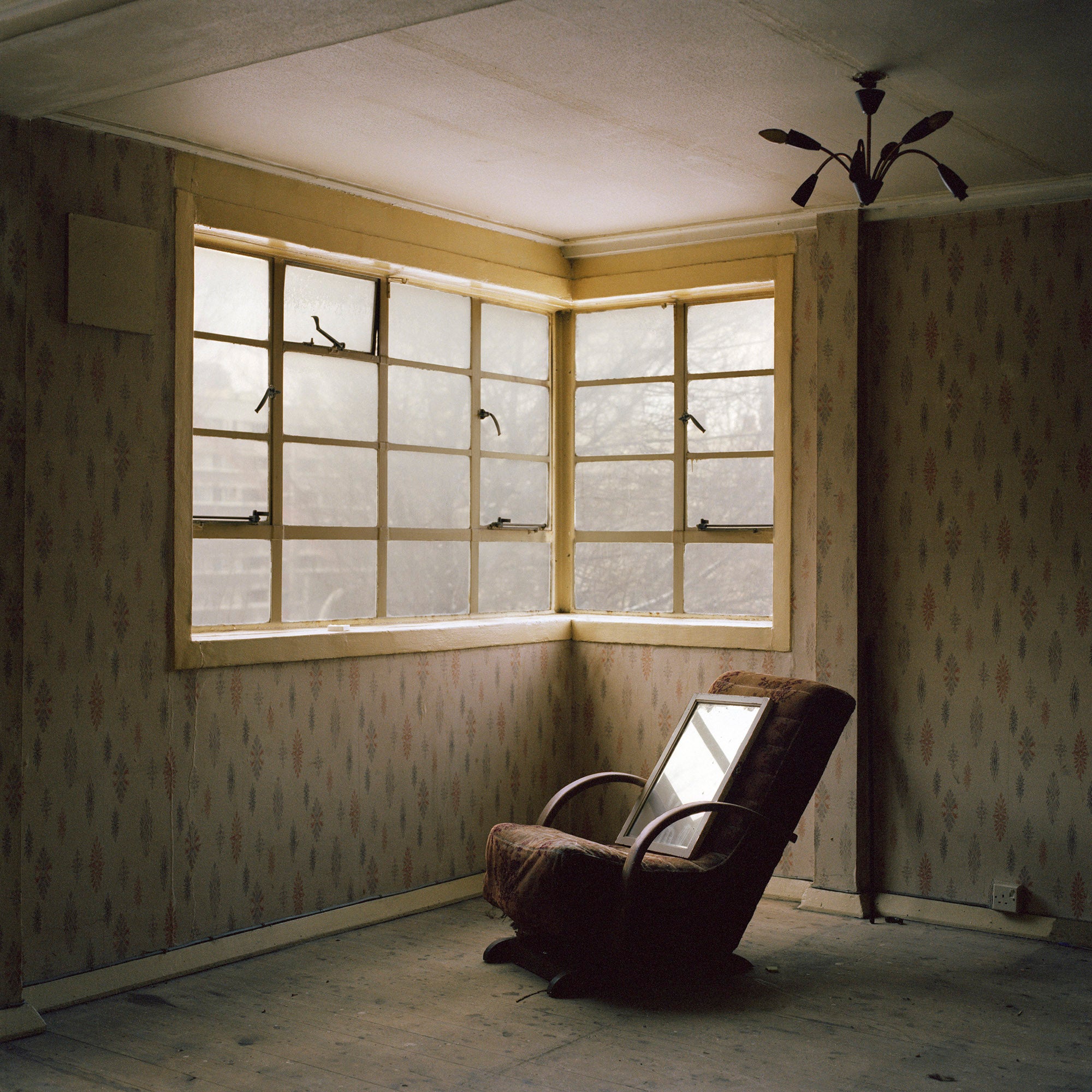
In its eerie final years, Quarry Hill caught the attention of the Manchester-born, Leeds-based photographer Peter Mitchell. “I photograph dying buildings and Quarry Hill was terminal by the time I got to it,” he says. “Times change and I know there was no point in keeping Quarry Hill Flats. But what it stood for might have been worth keeping.” He photographed the smashed windows, stained walls, and the remnants of the lives once lived there – abandoned armchairs and a pair of high-heeled shoes.
“I had no plans or schedule,” Mitchell recalls. “The first to go was Jackson House, demolished almost by hand because of the uncertainty of how the structure might fall. Some residents were still living in their flats whilst demolition carried on. Nibbling away would take years and even with cranes, bulldozers and flying balls the immense shadow of Oastler House still fell across the site five years later.”
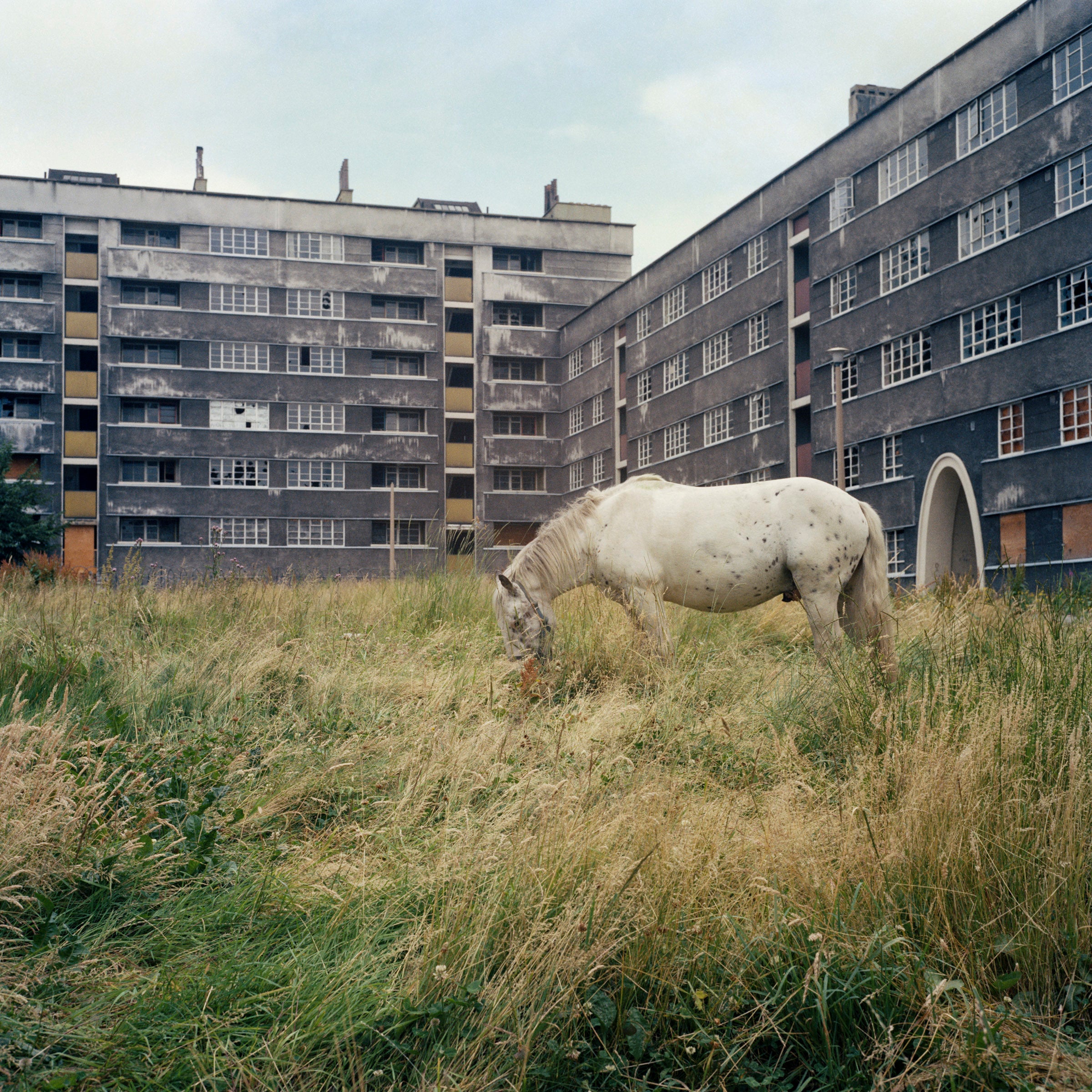
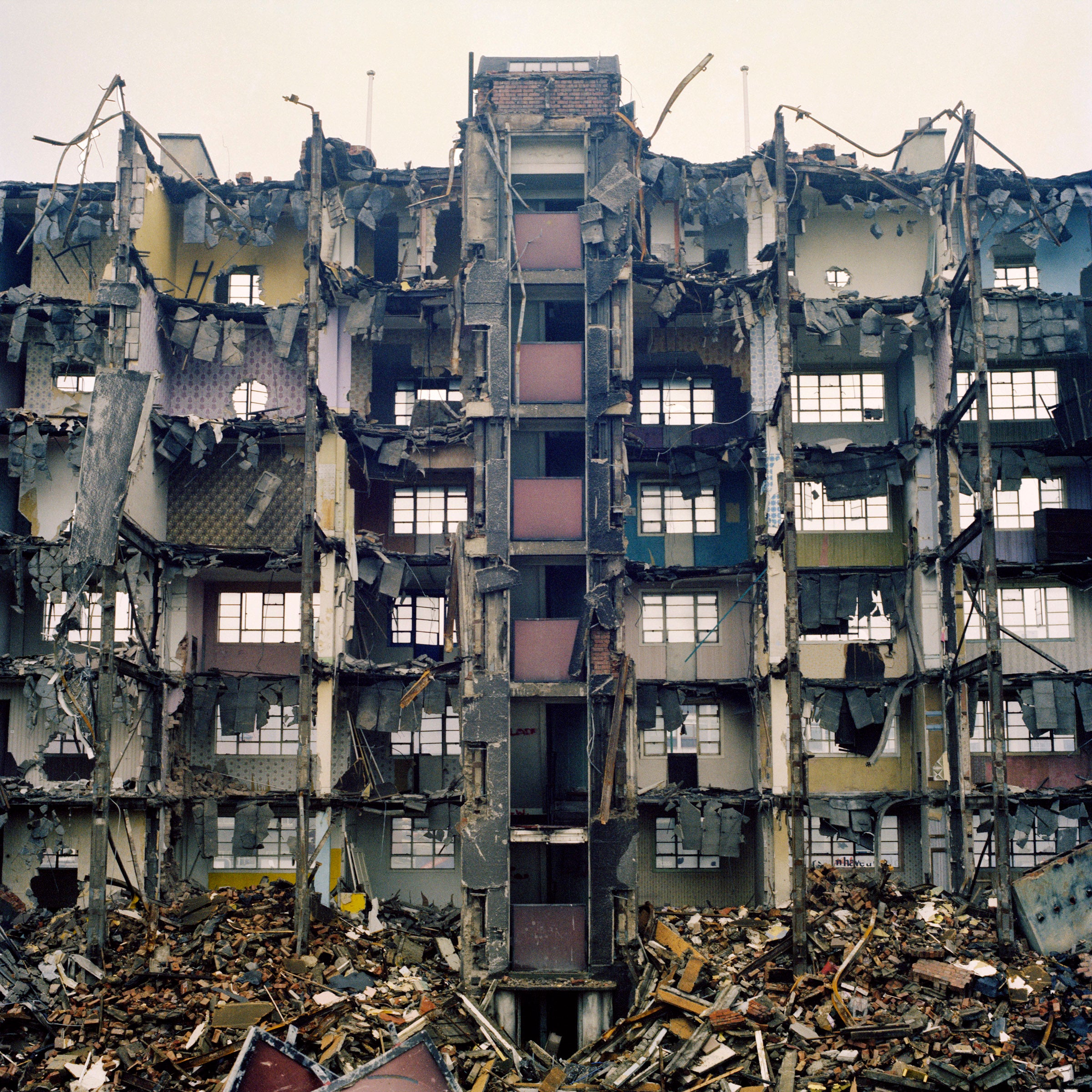
His work was self-published in 1990 as the photobook Memento Mori. It is now revisited in its sequel, Epilogue: The Demise of the Quarry Hill Flats, published by RRB Photobooks, which contains almost 50 mostly unpublished photos. Its release coincides with the current rejuvenation of the Quarry Hill site. Blocks of flats are currently being built there, which will hold over 300 units, and see the return of housing on the site after a 40-year hiatus. The utopian vision of affordable, community space for the working class has not returned however – the development contains only 27 affordable housing units, according to LeedsLive.
After the Quarry Hills demolition, Mitchell moved on – his exhibition A New Refutation of the Space Viking 4 Mission at Impressions Gallery in 1979 established his career and was the first colour exhibition at a British photographic gallery by a British photographer. “This show was so far ahead of its time, that no-one knew exactly what to say or how to react, apart from with total bewilderment,” photographer Martin Parr later said.
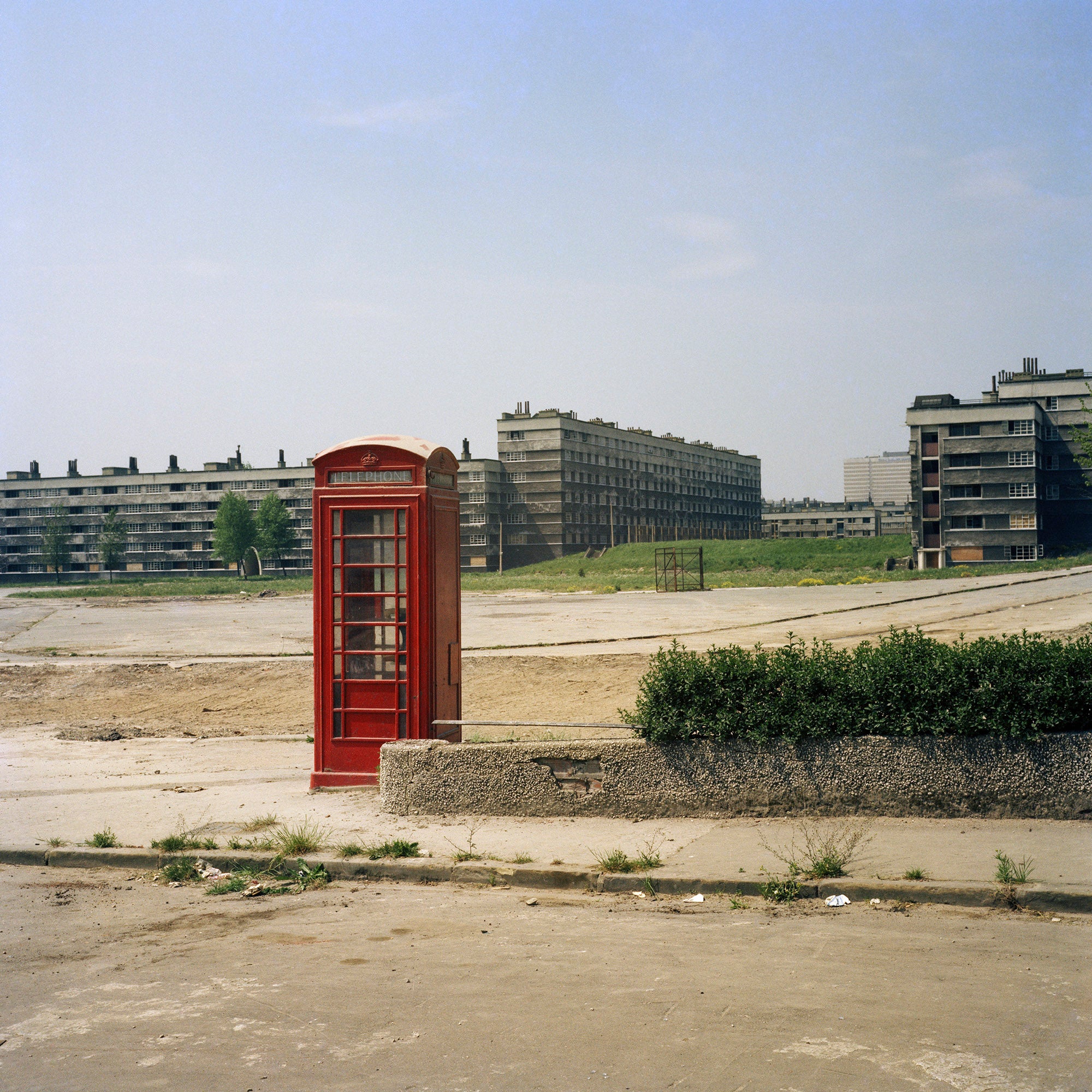
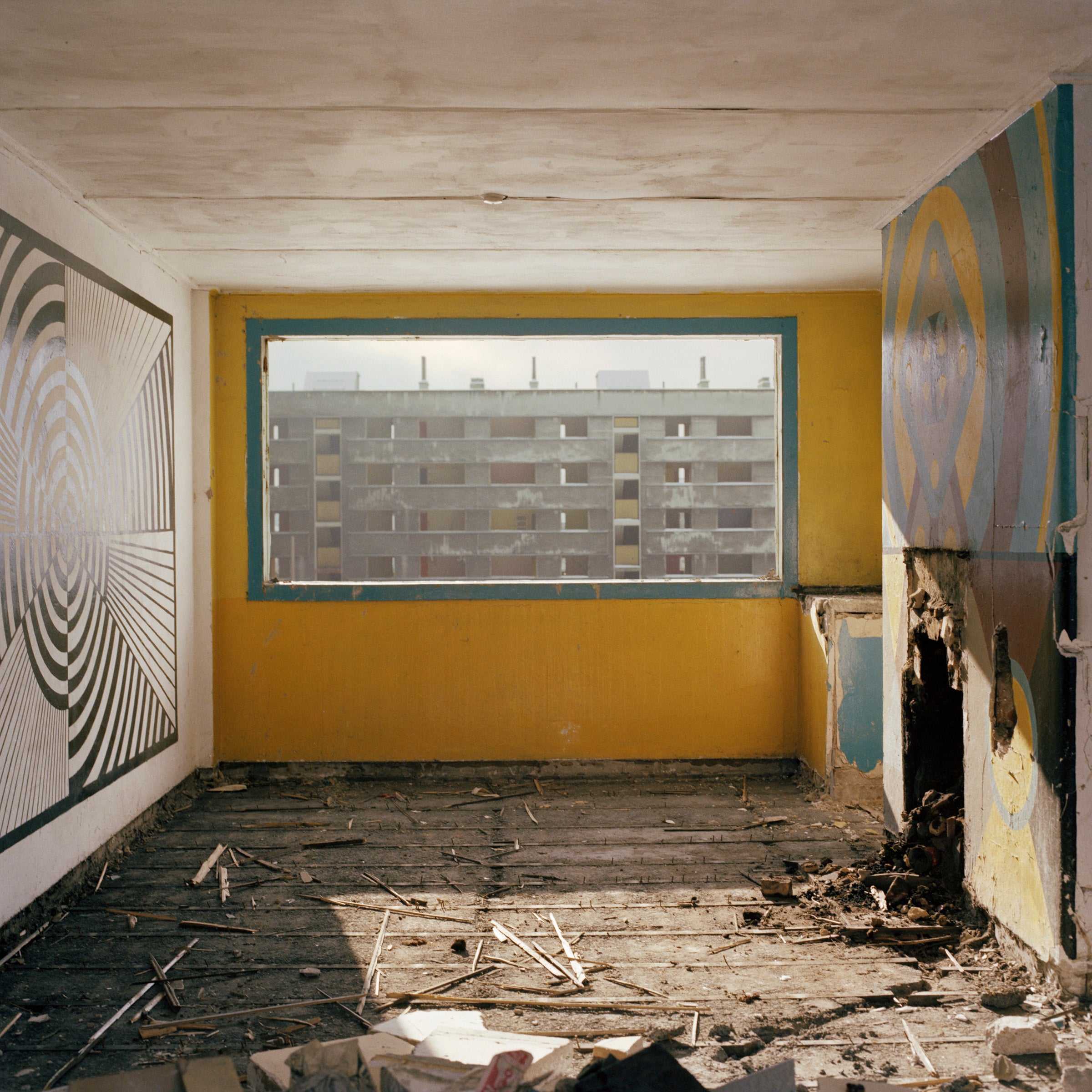
Mitchell remained in Leeds photographing the landscape, businesses and people of the city. Now approaching 80, he is beginning to gain long-delayed recognition in the art world, with his work shown at Tate Britain, Royal Photographic Society and Leeds Art Gallery.
So why does he think the dream of Quarry Hill ultimately died? In Epilogue, Mitchell mentions the failure to finesse the building’s original plans due to the outbreak of the Second World War, and a botched refurbishment in the 1960s. “It would appear that Yorkshire brickies had little experience of making concrete slabs, and as time went on whiteness left the citadel,” he writes. “Grubbiness set in and I got the feeling that Leeds has never liked flats, let alone ones on the scale of Quarry Hill.”
Yet he is still provoked by Quarry Hill, and the questions it raised about how we live. “How much rent do you pay these days? How long will you live in your house? Or is it your home? Quarry Hill Flats had a lot of answers but they remained unique, a one-off.”
‘Epilogue: The Demise of the Quarry Hill Flats’ is published by RRB Photobooks
Join our commenting forum
Join thought-provoking conversations, follow other Independent readers and see their replies
Comments